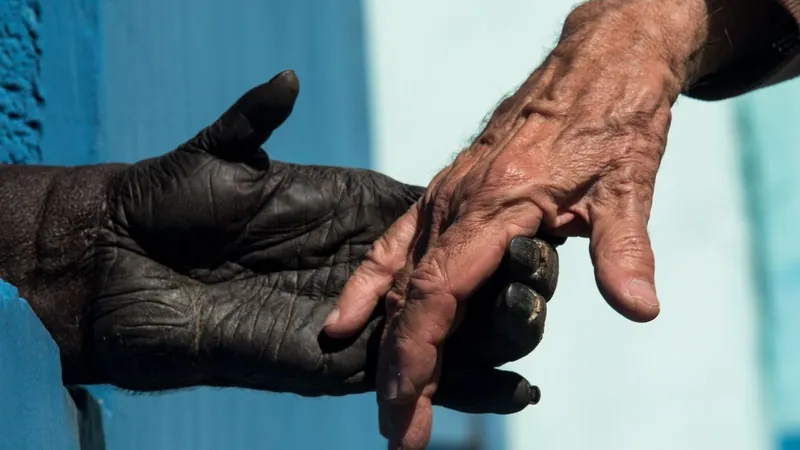
Shocking Discovery: Our Ancestor Lucy Might Have Crafted Tools Over 3 Million Years Ago!
2024-11-12
Author: Jia
Shocking Discovery: Our Ancestor Lucy Might Have Crafted Tools Over 3 Million Years Ago!
A groundbreaking study suggests that Lucy, the legendary australopithecine, and her kin may have wielded tools as far back as 3 million years ago! This revelation alters our understanding of early human behavior and tool development, indicating that such skills emerged long before the Homo genus came onto the scene.
Researchers from the University of Tübingen in Germany, led by paleoanthropologist Fotios Alexandros Karakostis, investigated muscle attachment sites on the hand bones of three species of australopithecines. Their findings, published in the prestigious Journal of Human Evolution, imply that these early ancestors were not just passive creatures; they had the physical capability for more dexterous actions, similar to those necessary for tool-making.
Karakostis emphasizes, “While we can't definitively assert that these early hominins crafted stone tools, our research indicates that their hands were adeptly used for manipulation, akin to what we see in modern tool users.” The study focused on specific areas on bones where tendons connect, called entheses, providing crucial insights into the regular activities of our ancestors.
Intriguingly, researchers found that different australopithecine species exhibited varying degrees of dexterity. For instance, Australopithecus sediba, dated between 1.95 million and 1.78 million years ago, displayed hand characteristics more similar to modern humans than its older counterparts, A. africanus and A. afarensis, which possessed a blend of human and ape-like features.
Modern apes, while capable of grasping, have limitations due to their anatomical structure. In contrast, Homo sapiens possess unique features that enhance their precise gripping abilities. The study highlighted two critical elements: the first dorsal interosseus muscle, which facilitates pinching motions, and the pinky finger, which plays a significant role in grasping. “The evolution of these features was crucial for early hominins,” notes study first author Jana Kunze, indicating a pivotal step toward advanced human-like dexterity.
The implications of this research extend to the ongoing debate about which species was the first to produce and use tools. The term "handyman" was historically assigned to Homo habilis following the discovery of their association with ancient stone tools. However, the potential for earlier australopithecines like A. afarensis, known through Lucy, to have had similar abilities complicates the narrative.
An astonishing discovery in 2015 of 3.3 million-year-old tools at Lomekwi, Kenya, suggested the possibility that A. afarensis might have been capable of tool-making, an idea that is now gaining traction with this new evidence. Karakostis shares, "Our findings strongly indicate that Australopithecus afarensis exhibited humanlike grasping techniques, hinting at an adeptness in object manipulation."
Although these findings do not conclusively prove that Lucy’s kind created these tools, they pave the way for further exploration into the capabilities of early hominins. Tracy Kivell, director of Human Origins at the Max Planck Institute, applauds the research for offering a fresh perspective on how australopiths engaged with their environment and the dexterity of their hand functions.
This research not only challenges existing paradigms but also ignites curiosity about the daily lives of our ancient relatives. What other secrets about the origins of tool use and early human behavior lie buried in the past? The quest for knowledge about our ancestors continues, unraveling the intricate tapestry of human evolution. Stay tuned for more enthralling discoveries!



 Brasil (PT)
Brasil (PT)
 Canada (EN)
Canada (EN)
 Chile (ES)
Chile (ES)
 España (ES)
España (ES)
 France (FR)
France (FR)
 Hong Kong (EN)
Hong Kong (EN)
 Italia (IT)
Italia (IT)
 日本 (JA)
日本 (JA)
 Magyarország (HU)
Magyarország (HU)
 Norge (NO)
Norge (NO)
 Polska (PL)
Polska (PL)
 Schweiz (DE)
Schweiz (DE)
 Singapore (EN)
Singapore (EN)
 Sverige (SV)
Sverige (SV)
 Suomi (FI)
Suomi (FI)
 Türkiye (TR)
Türkiye (TR)